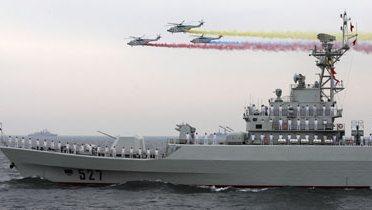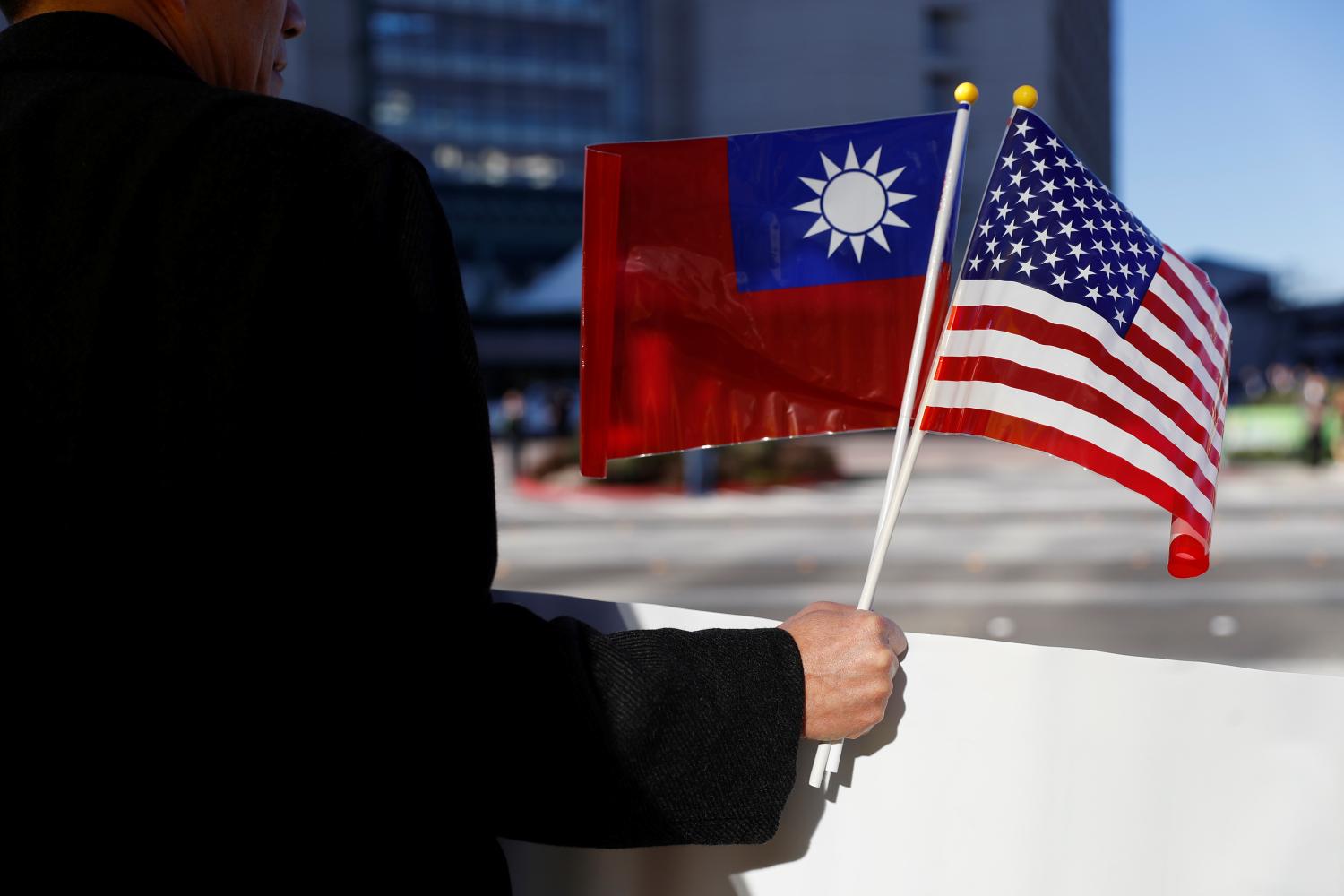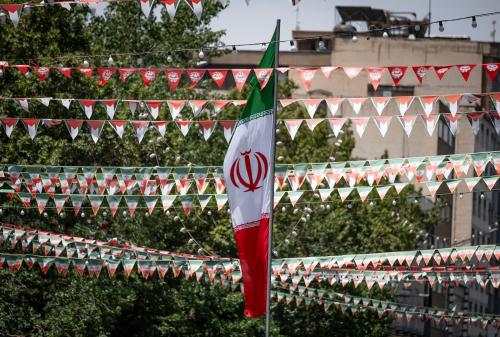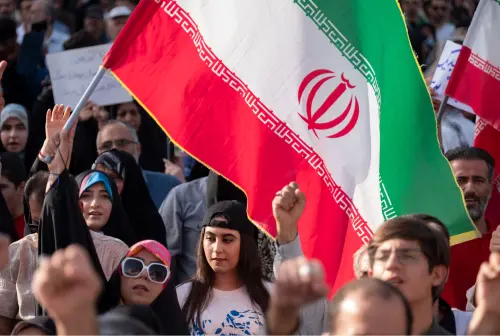INTRODUCTION
With the efforts of the Republic of China (ROC) to improve cross-Strait relations and expand cross-Strait economic and cultural exchanges, the tensions between the two sides of the Taiwan Strait have apparently been eased. Since May 2008, the two sides have resumed institutionalized negotiations and have thus far signed 15 agreements including the “Economic Cooperation Framework Agreement (ECFA).” As the two sides head toward a more pragmatic and mutually beneficial direction, the likelihood of a cross-Strait confrontation has been reduced.
Nevertheless, even with the relaxation in cross-Strait tensions, mainland China has up until now never renounced the use of force against the ROC, and the military stand-off across the Strait remains as the People’s Liberation Army (PLA) continues to modernize its forces, actively upgrade its armaments, and enhance its operational training and readiness capabilities. Some of these actions are aimed exclusively at the ROC. The rapid improvement of mainland China’s military strength is not only a part of its broad national security and defense strategies, but also illustrates its “carrot-and-stick” strategy toward the ROC.
Driven by its booming economic growth during the past decade, mainland China has invested heavily in its defense and aggressively developed long-range force-projection capabilities and a new generation of weaponry, such as missiles, submarines, carriers, anti-satellite weapons, stealth fighters, and large air and sea delivery vehicles. Additionally, mainland China has been attempting to construct “anti-access/area-denial (A2/AD)” capabilities in the Asia-Pacific region.
Generally speaking, the rapid growth of mainland China’s overall military strength has exceeded the need for self-defense. In spite of its claims of following the “defensive national defense” policy and the “active defense” military strategy, mainland China’s increasingly visible military activities in the Asia-Pacific region, combined with its unclear strategic intention and defense budget, has caused concerns among its neighboring countries. Moreover, the fast growth of PLA forces has rapidly resulted in military imbalance across the Strait, seriously threatening the ROC’s national security and undermining the strategic balance and regional stability of Asia-Pacific.
The PLA’s Military Threats against the ROC
(I) Major Military Build-ups
1. The Second Artillery: The PLA has been zealously developing and deploying new types of short- and medium-range missiles as well as intercontinental and cruise missiles. It also continues to improve the accuracy of its missiles and their ability to penetrate the missile defense system. The PLA has stationed over 1,400 tactical ballistic and cruise missiles along mainland China’s southeastern coastlines, creating the ability to launch multiple salvos of precision strikes against Taiwan. Meanwhile, as an attempt to fortify its A2/AD capabilities, the PLA continues to develop the DF-21D anti-ship ballistic missile and increase the number of new types of medium-range ballistic missiles, demonstrating its notable missile strike capabilities.
2. Air Capabilities: Mainland China also continues to introduce high-performance fighters and bombers, including the J-10, Su-27, Su-30, JH-7, and H-6. It has also developed the J-20 stealth fighter. Moreover, it has been deploying early-warning aircraft and air refueling tankers to strengthen its grasp of situations in the battlefield, enhance its air command-and-control, and extend its striking distance. Through the combination of its S-300PMU-2 surface-to-air missiles and HQ-9 air-defense missiles, which are deployed along the southeastern coastlines and can cover the entire Strait, the practice of an “offensive air defense” strategy, and the missile striking power of the Second Artillery, the PLA has the capability to seize partial air superiority over the Strait.
3. Naval Capabilities: China has manufactured and deployed new types of guided missile destroyers, guided missile frigates, stealth fast attack boats, and nuclear-powered and diesel-electric submarines. Along with its surveillance and reconnaissance systems such as reconnaissance satellites, maritime patrol aircraft, and over-the-horizon radar (OTHR), mainland China is now equipped with strong surface and underwater capabilities to partially blockade the ROC’s sea lines of communication (SLOCs), thus helping to facilitate its anti-access operations. Moreover, mainland China is currently building carrier battle groups, seeking to reinforce its blue water operation capabilities, escort operations, and the control over SLOCs.
4. Ground and Amphibious Capabilities: China is moving toward mechanization and informationalization by researching and developing new types of main battle tanks, amphibious tanks, and long-range multiple rocket launchers and outfitting them to troops in the Nanjing, Guangzhou, and Jinan Military Regions. The aforementioned armaments, in combination with new types of large amphibious vessels, help to improve the PLA’s mobility, fast assault abilities, and landing operations effectiveness. Moreover, mainland China is capable of projecting forces to and occupying islets and reefs in the disputed East and South China Seas when necessary.
5. Aerospace Capabilities: Mainland China, thus far, has over 60 satellites in orbit for military navigation and positioning, scientific research, meteorological purposes, and reconnaissance and communications. Among these are more than 20 military reconnaissance satellites, allowing mainland China to grasp the military dynamics of the ROC and other regional countries in all weathers. Additionally, the deployment of the positioning and communications satellite “Beidou (Compass)” has granted China initial positioning and global communications capabilities in the Western Pacific and has advanced the accuracy of its precision-guided weapons.
6. Cyber and Electronic Capabilities: Mainland China has established a “Cyber Force” and several information warfare centers exclusively in charge of developing computer viruses and cyber techniques and constructing the ability to attack adversaries’ computer systems and networks. By integrating military and civil resources and incorporating civil networks and IT talents, mainland China is highly capable of launching cyber attacks. In terms of electronic warfare, the PLA is equipped with new types of communications jammers and has deployed long-range jammers, various types of anti-radiation unmanned aerial vehicles (UAVs), and anti-radiation missiles. Hence, it has obtained the capabilities of electronic soft-kill disruption and hard-kill destruction.
(II) Major Threats to the ROC’s National Defense and Security
1. Around-the-Clock Surveillance and Reconnaissance: In combination with surveillance and reconnaissance facilities such as reconnaissance satellites, OTHR, early-warning aircraft, maritime patrol aircraft, UAVs, and electronic support measures, the PLA is able to monitor Taiwan around-the-clock and will be capable of effectively grasping the force deployment and military dynamics of the ROC Armed Forces.
2. Disrupting SLOCs or Blockading Taiwan: The operational range of the PLA’s new types of vessels and aircraft has been significantly expanded, and the PLA Navy continues to strengthen its ability in trans-regional long-range cruise training. Along with its shore-based long-range anti-ship and surface-to-air missiles, it is estimated that the PLA is now able to partially blockade air and sea domain around Taiwan, disrupt its SLOCs, and deny foreign forces accessing to the waters west of the First Island Chain. Upon the deployment of its carrier battle groups, the PLA will be even more capable of sealing off Taiwan.
3. Precision Strike: By upgrading the accuracy and effectiveness of its ballistic and cruise missiles and continuing the deployment of precision-guided weapons, anti-radiation weapons, long-range air-defense missiles, and anti-ship missiles, the PLA has significantly improved its joint strike firepower. In addition, it is capable of launching precision strikes against underway ships and aircraft as well as important political-military-economic facilities such as C4ISR systems, air force bases, government agencies, and key infrastructures.
4. Occupying ROC’s Outlying Islands: Mainland China continues to ameliorate its operational training and exercises for airborne assault and amphibious landing specifically for blockading the ROC’s outlying islands. It has also been aggressively acquiring new types of large landing ships and hovercraft in an attempt to upgrade its lift capacities and the speed of force projection. In tandem with the Second Artillery and air-sea war-fighting capabilities, mainland China has the potential to occupy the ROC’s outlying islands and even to invade Taiwan island.
The Impacts on the Strategic Situation in the Asia-Pacific Region
(I) Mainland China’s Military Expansion Draws Concerns from Its Neighboring Countries: Mainland China’s rapid military expansion in the past decade has exceeded the need for self-defense. Its defense spending lacks transparency, its strategic intention is unclear, and its military activities in the First Island Chain, the West Pacific, the South China Sea, and even the India Ocean have become more active in recent years. In 2010, mainland China even claimed the South China Sea as its “core interest” in a statement to U.S. officials. All of these actions have concerned its neighbors.
(II) Beijing Tries to Water Down the Notion of a “China Threat” through Befriending Neighbors and Military Exchanges: As an effort to pacify neighboring countries, mainland China has taken over leadership of the “Shanghai Cooperation Organization,” encouraged the “Six-Party Talks,” operated “ASEAN plus One,” and performed UN peacekeeping operations and escort missions in waters around Somalia. By undertaking these measures of “befriending neighbors” and “military exchanges,” mainland China attempts to demonstrate its status as a major power and ease neighboring countries’ concerns over the regional security threats caused by its military expansion.
(III) Neighboring Countries’ Reactions: In response to the potential challenges of mainland China’s military development and the tensions on the Korea Peninsula, Asia-Pacific countries such as Japan, South Korea, Vietnam, India, and Australia have recently strengthened their military cooperation with the U.S. or with each other. The U.S. has adjusted its force deployment in the Asia-Pacific, increased the number of nuclear-powered attack and guided missile submarines in the region, expanded the military base in Guam, and dispatched F-22 stealth fighters and various types of strategic bombers.
In conclusion, the threats of mainland China’s military expansion along with the issue of national defense and security have become the focus of attention among Asia-Pacific countries. In consideration of international politics, economic interests, and the maintenance of regional stability and peace, Asia-Pacific countries sustain a close economic and diplomatic relations and a certain extent of military exchanges with mainland China. However, as much as a source of opportunities, a rising China is in the meantime regarded by its neighbors as a potential threat.
The ROC’s Responses
Considering the huge gap between the ROC and mainland China in terms of overall national power and military strength, the ROC must exert its “smart power” and properly manage U.S.-China-ROC relations. It should also take advantage of cross-Strait exchanges to advocate ideas of democracy and encourage mainland China’s democratic transformation. In the aspect of national defense, the ROC must, based on the concepts of preventive defense and asymmetric warfare, actively fortify its “Hard ROC” Armed Forces to credibly safeguard the homeland, deter wars, and be a solid buttress in pursuit of cross-Strait peace, regional stability, and national prosperity. The efforts are as follows:
(I) At the National Strategy and Defense Level:
• On Cross-Strait Relations: The ROC should maintain cross-Strait political mutual trust and stability and consolidate its defense to discourage Beijing’s intention to use force against the ROC. In an active manner, the ROC should take advantage of cross-Strait exchanges to encourage mainland China to move toward political reform and democratic transformation.
• On International Relations: The ROC needs to maintain a good relationship with the U.S., enhance military exchanges with the U.S., and urge the U.S. to sell it advanced defensive weapons. In response to a rising China and for common security and strategic benefits between the U.S. and the ROC, it should smartly and properly resort to diplomatic measures to build exchange and cooperation relations in various fields with Asia-Pacific countries.
• On Defense Strategies: The ROC needs to build “Hard ROC” defense forces through the promotion of a volunteer culture for the Armed Forces, and defense transformation. By doing so, the ROC can fulfill its three major defense tasks, which are: defending the ROC, deterring enemy threats, and defeating enemy attacks. The ROC should also perfect its all-out national defense mechanism, reinforce its strategic sustainability, and improve the mobilization of reserves and materials.
(II) At the Military Strategy Level:
The ROC will never provoke or launch attacks. However, it must possess the ability to defend itself and counterattack the enemy after sustaining the first strike. To implement the military strategy of “resolute defense and credible deterrence,” the ROC Armed Forces must carry out the following tasks in an effective manner:
1. Resolute Defense: The ROC Armed Forces have to be able to sustain the enemy’s first strike, avert a decapitation strike, mount a counterattack, and sustain its warfighting capabilities in order to achieve the goal of “strategic sustainability and tactical decisiveness.”
2. Credible Deterrence: The ROC Armed Forces should effectively improve the interoperability of weapon systems across all armed services, increase the effectiveness of joint operations, and strengthen defensive countermeasures capabilities to make the enemy aware of the costs and risks of invasion and then rationally give up on any hostile intention of aggression.
3. Anti-Blockade: The ROC Armed Forces need to ensure the security of its air and sea domain in peacetime. During wartime, the Armed Forces need to coordinate joint warfighting capabilities and counter the enemy’s blockade operations, open up aerial and maritime safety lanes, and maintain communications to the outside world to ensure the continuity of the government and the social system.
4. Joint Interdiction: After the enemy launches an attack, the ROC Armed Forces need to take advantage of favorable situations to exert defensive countermeasures and attack military objectives important to the enemy as well as amphibious forces staging and embarking at ports. Subsequently, the Armed Forces need to focus on joint interdiction operations and joint anchorage attack in order to stop and annihilate the enemy at the phase of crossing the Strait.
5. Ground Defense: If the enemy forces its way ashore, the ROC Armed Forces must build up an in-depth defense system with its all-out defense capabilities and implement a multi-layered interdiction to annihilate the enemy’s landing and airborne troops before it is able to gain a foothold.
(III) Fighting against the Enemy’s Overwhelming Strength with Smart Power-The ROC’s Asymmetric Strategy:
The ROC’s asymmetric strategy is an innovative way of thinking. It aims to effectively exert other operational capabilities in addition to conventional warfighting capabilities, incorporate regular and irregular operational methods for flexible application, and develop low-cost, high-performance, and easy-to-establish asymmetric / innovative forces. The intention is to maximize the ROC’s strength, attack the enemy’s vulnerability, and hold down the enemy’s operational capabilities and actions, so as to obtain greater freedom of action and achieve the goal of fighting against the enemy’s overwhelming strength with smart power.
Conclusion
With the insistence on the value of democracy, the ROC is now proceeding toward volunteer forces and defense transformation in an attempt to build modernized “Hard ROC” defense forces and demonstrate its determination to safeguard national security and maintaining the stability in the Strait. In terms of international politics, economics, and strategic consideration, the ROC is an indispensable member of the Asia-Pacific region. It is hoped that the United States and the international community will continue to support the ROC and expand exchanges and cooperation so as to create a multi-win and mutually beneficial situation. Eventually, it is expected that United States will sell advanced defensive weapons to the ROC for self-defense and contribution to the safety and stability in the Asia-Pacific region.
The Brookings Institution is committed to quality, independence, and impact.
We are supported by a diverse array of funders. In line with our values and policies, each Brookings publication represents the sole views of its author(s).




